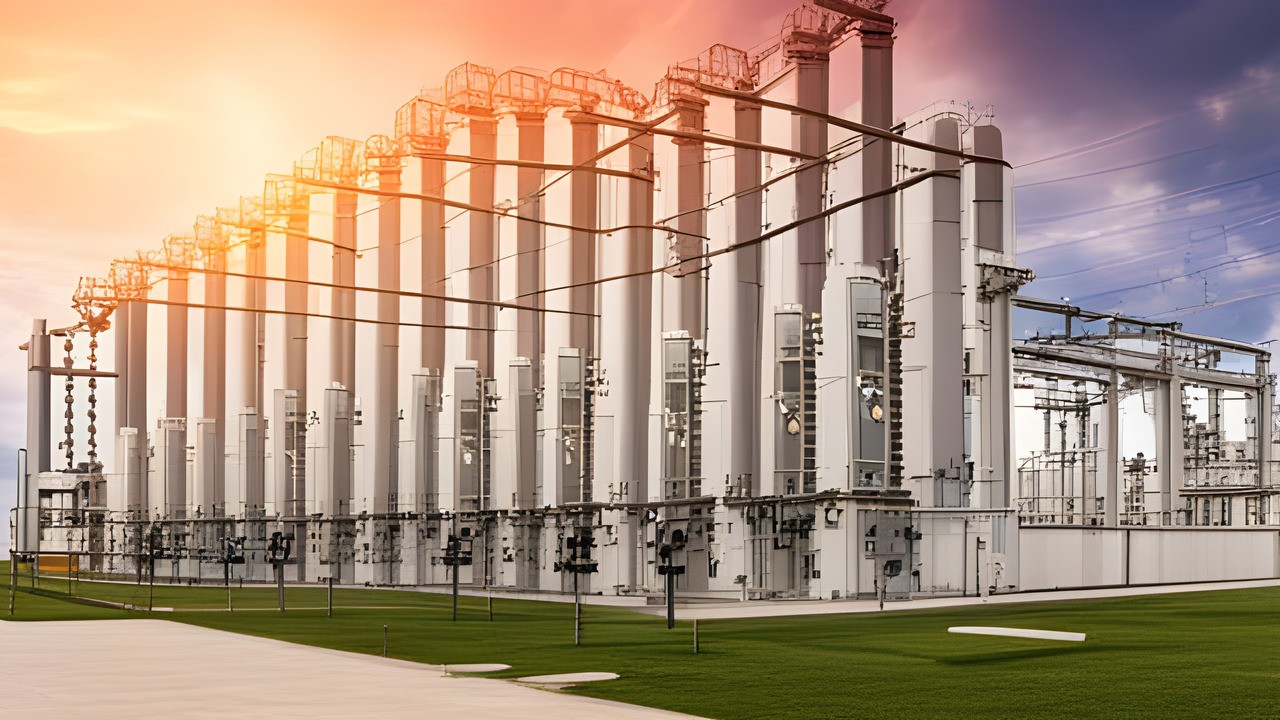The power grid is the backbone of any modern civilization, and as such, its optimization is crucial for the efficient distribution of electrical energy. One of the critical components of this grid is the transformer, responsible for stepping up or down the voltage level as required for efficient transmission and distribution. Transformer selection and placement strategy significantly impact grid performance, and therefore, understanding the best practices and advanced planning techniques is essential for engineers working in power companies.
In this article, we'll explore transformer selection, placement strategies, and how advanced planning techniques can optimize grid performance.
Understanding Transformers
Transformers are electrical devices that transfer electrical energy between two or more circuits through electromagnetic induction. They are primarily used to increase (step-up) or decrease (step-down) voltage levels between circuits, which is vital for power transmission and distribution.
There are several types of transformers, each with its specific purpose. They include power transformers, distribution transformers, instrument transformers, and others. The choice of transformer depends on the application, location, and the specific requirements of the power system.

Transformer Selection
Transformer selection is a crucial part of the design and operation of a power system. Here are a few things to consider when selecting a transformer:
The selection of a distribution transformer involves considering several crucial criteria to ensure the optimal performance and compatibility with the electrical distribution system. Here are the main factors to consider:
- Power rating
Determine the required power rating of the transformer based on the load requirements and anticipated future growth. This involves analysing the maximum and average load demand to select an adequately sized transformer. - Voltage levels
Consider the primary and secondary voltage levels required by the distribution system. This includes assessing the nominal voltage, voltage regulations, and accounting for any voltage transformations needed. - Efficiency
Evaluate the efficiency level of the transformer, as higher efficiency transformers result in reduced energy losses and improved overall system efficiency. This consideration is important for energy conservation and environmental sustainability. - Impedance
Transformer impedance affects voltage regulation and fault levels. Evaluate the impedance value to ensure it aligns with the requirements of the distribution system, not causing excessive voltage drops or impacting fault current levels. - Loading conditions
Consider the expected loading conditions of the transformer. Evaluate factors such as load variations, load diversity, and loading patterns to ensure that the transformer can handle the anticipated load profile without exceeding limitations. - Insulation level
Select a suitable insulation level based on the expected operating conditions, including temperature, humidity, and altitude. This ensures the transformer can operate reliably and withstand any environmental stresses. - Cooling method
Choose an appropriate cooling method for the transformer, which can be air or liquid-based. Consider factors such as the ambient temperature, available cooling mediums, and maintenance requirements to determine the most suitable cooling solution. - Reliability and durability
Assess the reliability and durability of the transformer, considering factors such as the manufacturer's reputation, quality of construction, and compliance with relevant standards and regulations. - Cost considerations
Compare the costs of different transformer options, taking into account upfront costs, installation expenses, maintenance requirements, and expected lifespan. Strive for a balance between initial investment and long-term operating costs. - Environmental Factors
Factors such as ambient temperature, altitude, and humidity can affect the transformer's performance and lifespan. Therefore, the transformer's design and materials should be suitable for the operating environment.
Transformer Placement Strategy
The placement of transformers within a power grid significantly affects its reliability, efficiency, and load management. Here are some considerations for transformer placement:
- Proximity to the load
Place distribution transformers as close as possible to the loads they are serving. This helps minimize power losses and voltage drop in the distribution network by reducing the length of low-voltage cables. - Accessibility and maintenance
Ensure that distribution transformers are placed in easily accessible locations for maintenance and repairs. Sufficient clearance space must be provided around the transformer for safety and ease of maintenance tasks. - Ventilation and cooling
Place distribution transformers in well-ventilated areas to ensure proper cooling. Sufficient clearance should be maintained around the transformer to allow for adequate air circulation and heat dissipation. - Protection from external factors
Protect transformers from harsh weather conditions, such as direct sunlight, heavy rain, or extreme temperatures. Adequate shelter or proper weatherproof enclosures should be provided to ensure their longevity.
Place transformers in secure areas that are well-lit and easily visible to deter theft and vandalism. Avoid secluded or hidden locations that could provide cover for criminals. Install sturdy fencing around transformer sites to create a physical barrier and restrict unauthorized access. Implement additional deterrents such as bollards, anti-climbing measures, or protective cages to make it harder for thieves to target the transformers. - Avoidance of congested areas
Avoid placing transformers in congested areas where there is limited space for expansion or where the risk of physical damage is high. This includes avoiding areas prone to flooding, high-traffic zones, or locations with restricted access. - Consideration of noise levels
Distribution transformers can generate noise during operation. If they are placed near residential or noise-sensitive areas, it is important to implement noise mitigation measures, such as soundproof enclosures or placing barriers to minimize noise transmission. - Compliance with regulations
Ensure that transformer placement adheres to local codes, regulations, and safety standards. Consult with relevant authorities or electrical engineers to ensure compliance with clearance distances, setbacks, and other specific requirements. - Future growth and expansion
Consider the future growth and development plans in the area when placing distribution transformers. Adequate provision should be made for future load increases to ensure that the transformer capacity can accommodate expanding electricity needs. - Aesthetics and environmental impact
When possible, consider the visual impact and environmental considerations of transformer placement. Harmonize transformer installations with the surroundings and take steps to minimize any adverse environmental impact.
Advanced Planning Techniques
Advanced planning techniques can greatly contribute to the optimized selection and placement of transformers, leading to improved grid performance. Here are some recommended strategies for advanced planning:
- Load forecasting
Accurate load forecasting helps in understanding the future demand growth and load patterns. By analysing historical data, growth projections, and considering factors like industrial developments or population changes, load forecasts can guide transformer selection and placement strategies. - Grid optimization studies
Conducting grid optimization studies using advanced software tools like GIS mapping can help identify potential bottlenecks, voltage drop issues, or overloads in the distribution network. These studies can inform transformer selection and placement decisions to alleviate grid constraints and enhance its overall performance. - Distribution automation
Implementing distribution automation technologies such as smart grid systems, real-time monitoring, and advanced metering infrastructure can provide valuable data on load patterns, voltage levels, and power quality. Leveraging this data can aid in selecting the right transformer capacities and determining optimal placement to address specific distribution network requirements. - Feeder reconfiguration
Analyse and optimize the feeder configuration by considering load distribution, fault levels, and redundancy requirements. This can involve re-routing feeders, creating new substations, or altering the layout of the distribution system to improve reliability, reduce losses, and enhance transformer selection and placement. - System reliability analysis
Perform reliability analysis to identify critical loads, assess risk factors, and determine the appropriate levels of redundancy. This analysis helps in selecting transformers with appropriate reliability features and strategically placing them to improve system resilience and minimize downtime. - Asset management and life cycle analysis
Adopting comprehensive asset management strategies can enable monitoring and optimal utilization of existing transformers. Conducting life cycle cost analysis for transformer assets aids in making informed decisions regarding replacement, refurbishment, or strategic placement to enhance overall system efficiency. - Integration of renewable energy sources
With the increasing integration of renewable energy sources such as solar or wind, analyse the impact of distributed generation on the distribution system. This analysis helps in selecting and placing transformers to accommodate the variable generation outputs and maintain stability and power quality. - Future-proofing the infrastructure
Consider future growth, technological advancements, and changing energy dynamics while planning for transformer selection and placement. Anticipating evolving demands and incorporating flexibility in transformer capacity and location choices can avoid the need for frequent upgrades and accommodate future changes more seamlessly.
Takeaway
Implementing advanced planning techniques for transformer selection and placement can have a significant impact on optimizing grid performance. By incorporating load forecasting, grid optimization studies, distribution automation, and considering factors like feeder reconfiguration, system reliability, asset management, renewable energy integration, and future-proofing, grid operators can make informed decisions that enhance the efficiency, reliability, and resilience of the distribution network. The careful selection and strategic placement of transformers based on these strategies can lead to improved grid performance and ensure that the distribution system is well-equipped to meet the evolving demands of the future.
Should you have any queries pertaining to our distribution transformers, please do not hesitate to get in touch with us. Our team of specialists is eager to collaborate with you in order to identify the most suitable solution.
Editor's note: This article was originally published in August 2023 and has been updated for comprehensiveness.





I appreciated you pointing out that the required power rating of the transformer relies on the load requirements and expected future growth. My friend wants to opt for an electrical transformer rental. I should advise him to go for it to obtain the best unit for their needs.
Dear Victoria,
Thank you for taking the time to read our article on Grid Performance Optimization and for sharing your thoughts. We're glad to hear that you found the information about transformer selection and power rating helpful.
When it comes to selecting a transformer, considering the load requirements and expected future growth is indeed crucial. It ensures that the chosen transformer can handle the current and potential future demands of the electrical system. As for your friend who is considering an electrical transformer rental, it can be a viable option depending on their specific needs and circumstances. Renting a transformer allows for flexibility, especially when temporary power requirements or specific projects are involved. It also provides the opportunity to access the best unit for their needs without the long-term commitment of purchasing.
We would advise your friend to thoroughly evaluate their power needs, duration, and budget to determine if renting a transformer is the most suitable solution for their situation. They may also want to consider consulting with a reputable rental provider who can guide them in selecting the right unit and ensuring compatibility with their electrical system.